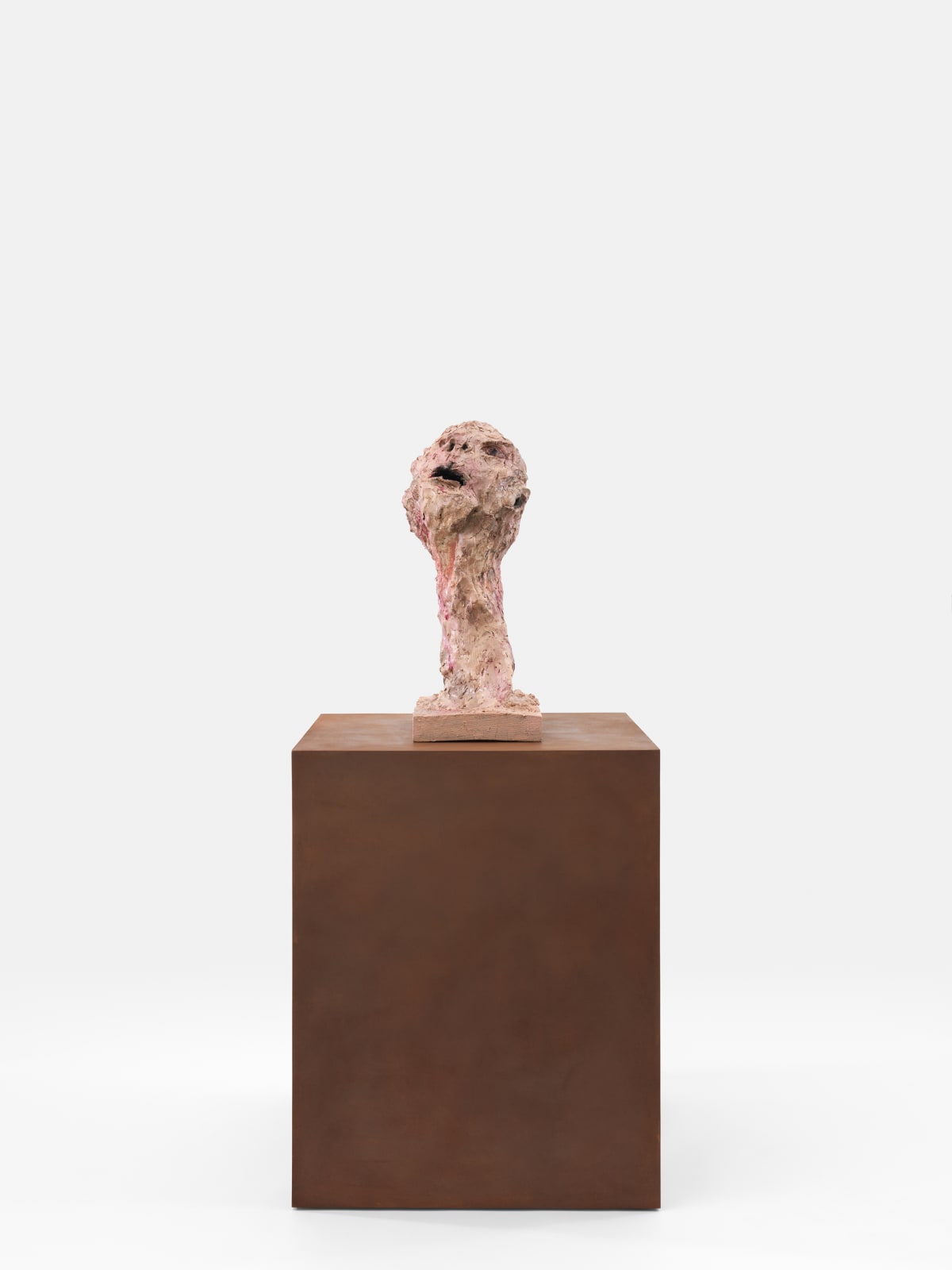Huma Bhabha
Listen to What I'm not Saying, 2021
wood, plaster, clay, wire and acrylic
madeira, gesso, argila, arame e acrílico
madeira, gesso, argila, arame e acrílico
62.2 x 24.1 x 40.3 cm (obra de arte)
24 1/2 x 9 1/2 x 15 7/8 in (artwork)
81.3 x 65.7 x 65.7 (pedestal)
32 x 25 7/8 x 25 7/8 in (pedestal)
24 1/2 x 9 1/2 x 15 7/8 in (artwork)
81.3 x 65.7 x 65.7 (pedestal)
32 x 25 7/8 x 25 7/8 in (pedestal)
Bhabha’s hybrid creatures, like this one and other flayed and mutilated heads and torsos, are sites of intersection between human exteriority and interiority laying bare the forces of power and...
Bhabha’s hybrid creatures, like this one and other flayed and mutilated heads and torsos, are sites of intersection between human exteriority and interiority laying bare the forces of power and pain to which people have been subjected eternally. Both artists are deeply and ethically invested in the human image and scour the historical continuum of figurative representation for inspiration. Bhabha acknowledges a vast and eclectic range of influences on her art including sci-fi and horror films, ancient architecture, Egyptian seated figures, ancient Greek statuary, the broken remains of the colossal Roman Constantine, the ancient Greco-Buddhist sculpture of Gandhara, Indian and African sculpture, Picasso, Giacometti, Dubuffet, Rodin, Rauschenberg, her birthplace of Karachi, Pakistan, holocausts throughout time, and the untold acts of horror and cruelty in contemporary times perpetrated against powerless, marginalized, and disenfranchised peoples.
